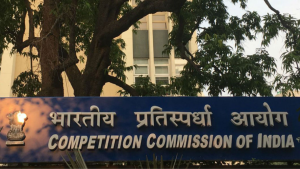

Fast Track Commercial Courts
Fast Track Commercial Courts
By Surya Prakash B S (@SuryaPrakashBS)
Recent developments seeking to set up fast track commercial courts are a good example of how our judicial reform process is hampered by lack of relevant data and clear reasoning.
In the Budget Speech in February 2015, Finance Minister Arun Jaitley had announced the Government’s intention to prioritise the establishment of commercial courts. These courts are meant to facilitate the speedy disposal of commercial disputes, which are typically resolved only after several years spent in the judicial system. The Commercial Courts, Commercial Division and Commercial Appellate Division of High Courts Bill, 2015 was introduced in the Lok Sabha in April 2015 and is currently being examined by a Committee under the Ministry of Law and Justice. An excellent summary of this Bill by PRS Legislative Research can be found here.
Meanwhile, according to press reports, the Prime Minister has on 20 October approved the issuing of an ordinance to make this bill a law. After the ordinance receives Presidential assent, state governments will need to make necessary changes to their respective High Court regulations to operationalise the new scheme.
This is not the first time that commercial courts have garnered attention. The Law Commission had previously submitted a report on this issue in 2003. A bill was introduced in the Rajya Sabha in 2009 after the Lok Sabha approved it – but was then referred to a select committee of the Rajya Sabha. A revised bill was introduced in the Rajya Sabha in 2010 which was then referred to the Law Commission for analysis. The Commission submitted its second report on the topic in February 2015.
Some of the relevant highlights of the recommendations of the Law Commission are:
- The need for setting up commercial courts in India is ‘obvious’.
- High Courts that have original jurisdiction for commercial disputes should set up Commercial Divisions – there are five such High Courts. Original jurisdiction means that the relevant High Court can directly admit commercial disputes above a certain value without the lower courts having to hear the matter first.
- Other jurisdictions should set up separate Commercial Courts, e.g., Bangalore, Madurai (together referred to as ‘Commercial Courts’ in this article).
- The new Courts can hear only disputes of Rupees One Crore or more.
- Judges appointed to the new Courts should have demonstrable expertise and experience in commercial litigation.
- A time bound procedure for filing statements, hearing and disposal mandated. Court fees to depend on the number of hearings. This will be court-led litigation (rather than led by litigants).
- Orders of the Commercial Courts to be heard by the Commercial Appellate Division of the High Court.
Some Aspects
Need for reform
While making a case for commercial courts, the Law Commission’s report gives data on pendency and a sizing of the commercial disputes at five of the High Courts and concludes that there is significant pendency and sizeable number of cases. The question that we have to ask is whether commercial disputes are in any way different from other types of disputes (e.g., criminal, social, constitutional). There is nothing in the report that compares the pendency rate and size of the various types of cases so as to justify that a reform of commercial disputes mechanism should be taken up first over other types. The previous Law Commission report on this topic too starts with the assumption that commercial dispute resolution needs to be fixed without any background as to why this is so.
Tables 2.1 of the Law Commission Report talks of total civil suits pending. Tables 2.2 and 2.3 pertain to suits with original jurisdiction only. Table 2.4 gives what percentage of original civil suits are commercial suits.
Let us for a moment see how much of total civil suits are comprise of such ‘commercial disputes’ based on the above numbers:
High Court | Total Civil Matters pending (as per Table 2.1) | Total Commercial Disputes pending (as per Table 2.4) | % |
Bombay | 2,99,931 | 1,997 | 0.67% |
Calcutta | 2,30,317 | 5,352 | 2.32% |
Delhi | 49,000 | 3,582 | 7.31% |
Himachal Pradesh | 54,015 | 88 | 0.16% |
Madras | 4,90,383 | 5,865 | 1.20% |
Total | 11,23,646 | 16,884 | 1.50% |
As can be seen above, commercial disputes form only 1.5% of the total number of civil suits pending at the High Courts.
It would have been ideal if the report had analysed the various types of civil suits pending and then arrived at a logical conclusion that among these cases ‘commercial’ disputes are more worthy of being reformed first. Para 2.4.4 the report admits of difficulty arising out of differences in classification practices across High Courts. A measurement of pendency across High Courts would have demonstrated a need for commercial courts to be set up throughout India. What is apparent is the lack of data to measure the judicial system.
The capacity of the State to dispense justice is a limited resource. Parties who have other means of dispute resolution (arbitration, mediation, etc.) by choosing to use courts, are taking away resources from other parties who do not have any such alternatives (e.g., criminal, social, and constitutional matters). Utilising this scarce resource should require a complete cost-benefit analysis for society. Admittedly, estimating costs is a complex task, but surely the gravity and the far reaching implication of the task before us requires it.
Fast Tracking
The Report recommends the setting up e-courts with world class infrastructure and time-bound disposals. It also recommends that the court fees charged should be commensurate with this facility. Whether the justice dispensing function of the State should be thus made easily available for those who can afford to pay high fees is be a concern. The Report itself lists out certain concerns of the members of the Rajya Sabha about this move being ‘elitist’ and ‘corporate friendly’ (pages 7-8). There is nothing in the Report to assuage such concerns. However, if the State does decide to dispense justice in a certain manner to a certain category of citizens, then recovering costs incurred for the same from those citizens is not irrational.
Monetary Threshold
Only disputes of value of Rupees One Crore or more are to be admitted in the new Commercial Courts. The system of pecuniary limits, which varies between High Courts, has already been in place for some time now. The basis for arriving at this threshold has not been provided – neither has an impact analysis been done.
A break up of outstanding matters via a break up of cases by monetary limit in five High Courts have been provided (table 2.6 page 19), of course with caveats on the accuracy of the data. As per information provided here cases above Rupees One Crore constitute only 25% of the outstanding commercial disputes. What would have really been convincing is a monetary threshold wise pendency data (table 2.7 on page 20 only gives total pendency).
By increasing the threshold all that has been achieved is pushing cases to lower courts – and a statistical improvement in the disposal rate of the High Courts. Is that really solving the root cause of the problem? It may be prudent for the Government to have a road map to make such commercial courts more inclusive and a time bound lowering of the thresholds.
Judges
One also needs to bear in mind that judges for such fast track commercial courts would be drawn from the regular benches at the High Court. Because of the time bound nature of these courts, judges will have to devote more time to such matters. And indeed that is the objective. If the overall number of judges is not increased commensurately the setting up of this court may lead to increase in pendency of non-commercial disputes.
Conclusion
A bold change from a litigant-led litigation to a court-led one is being tried out for the first time. Given the increasing pendency rate at our courts while any change is welcome from a status quo, the process of deciding what areas to begin the reforms from needs to be more logical and thought through completely.
[ReviewDisclaimer]

Surya Prakash
RECENT ARTICLES


Testing the Waters: Pre-Implementation Evaluation of the 2024 CCI Combination Regulations

Not Quite Rocket Science

Administration of justice needs an Aspirational Gatishakti

-
Rule of Law ProjectRule of Law Project
-
Access to Justice SurveyAccess to Justice Survey
-
BlogBlog
-
Contact UsContact Us
-
Statistics and ReportsStatistics and Reports
© 2021 DAKSH India. All rights reserved
Powered by Oy Media Solutions
Designed by GGWP Design